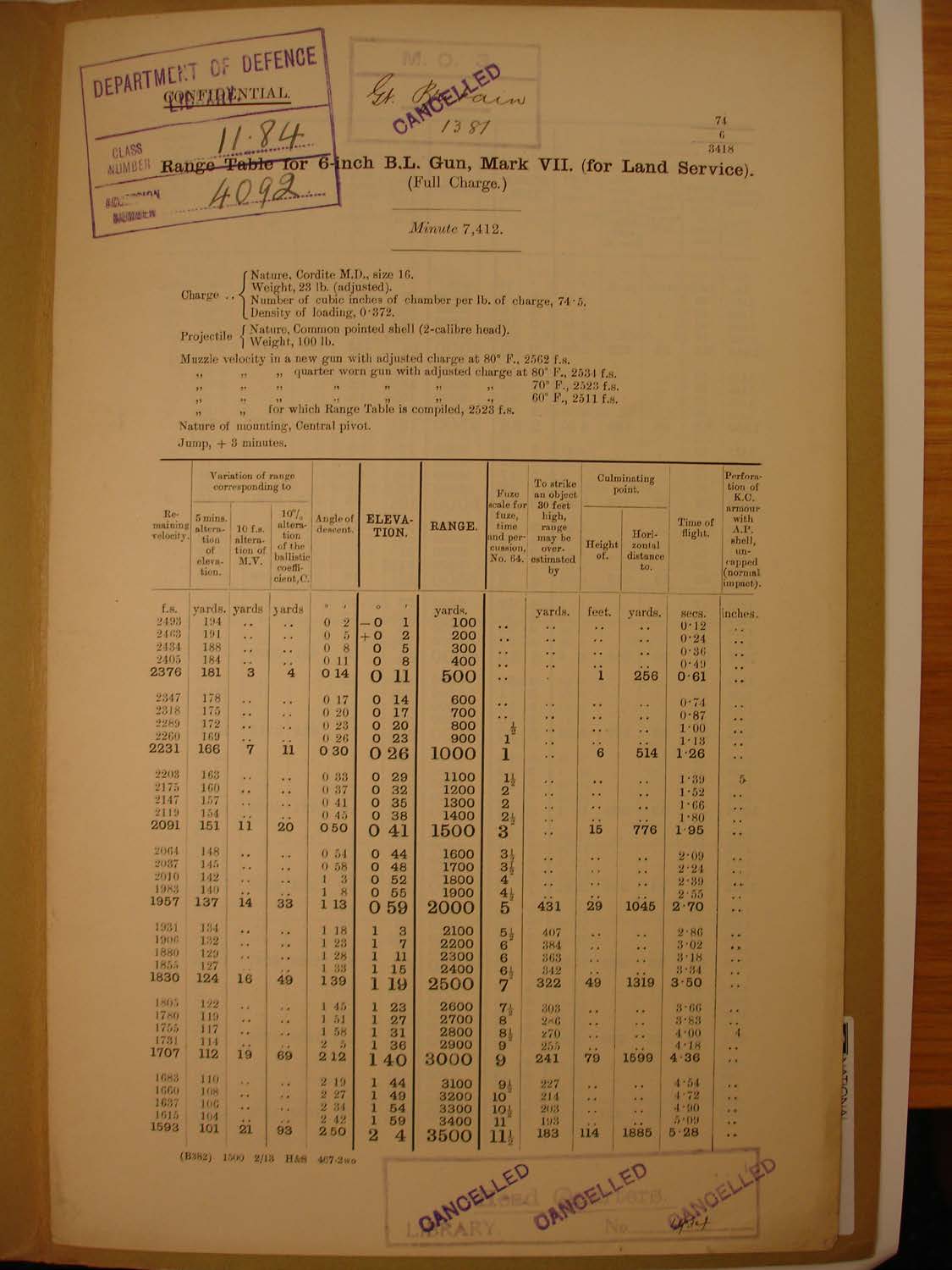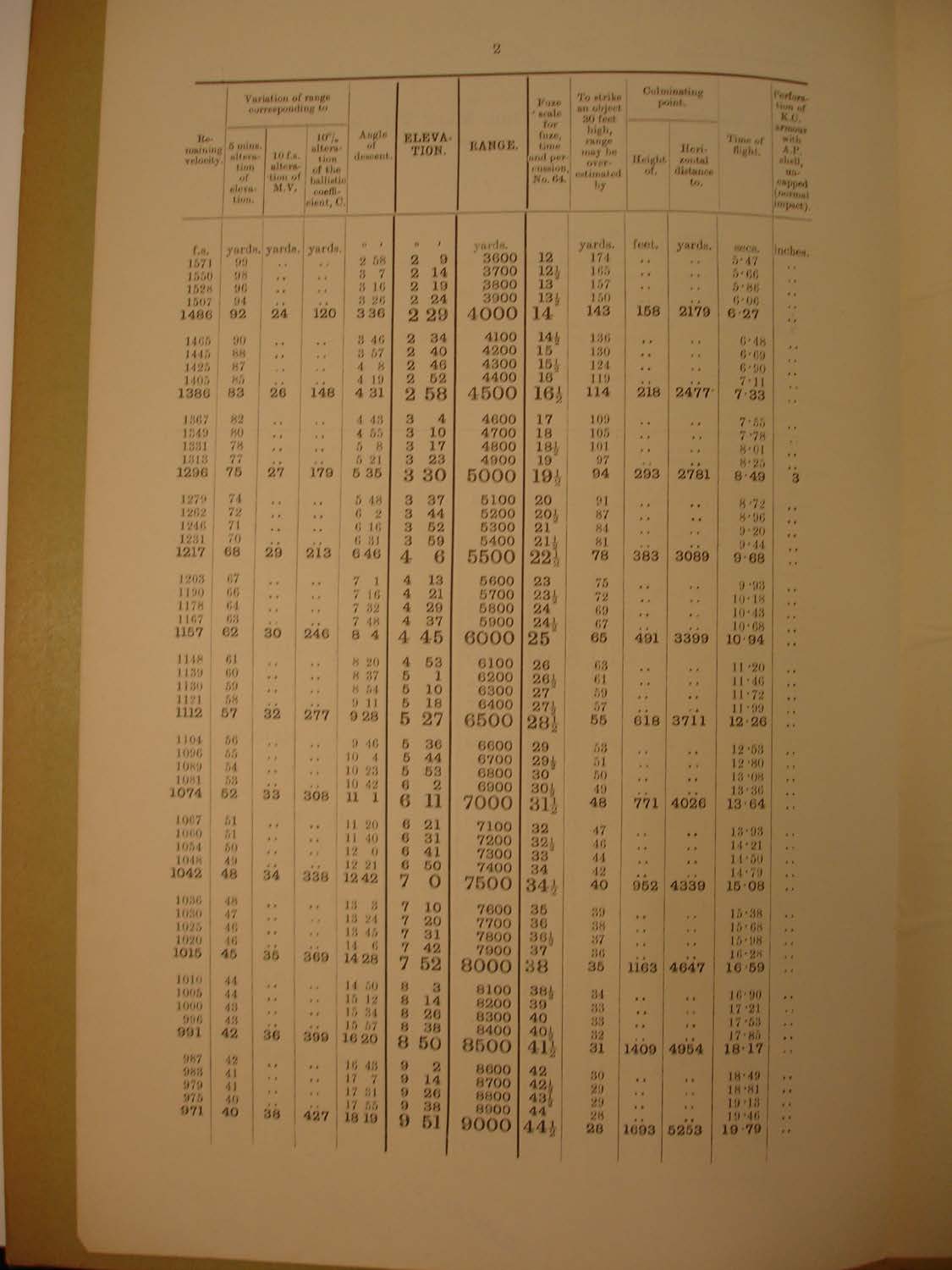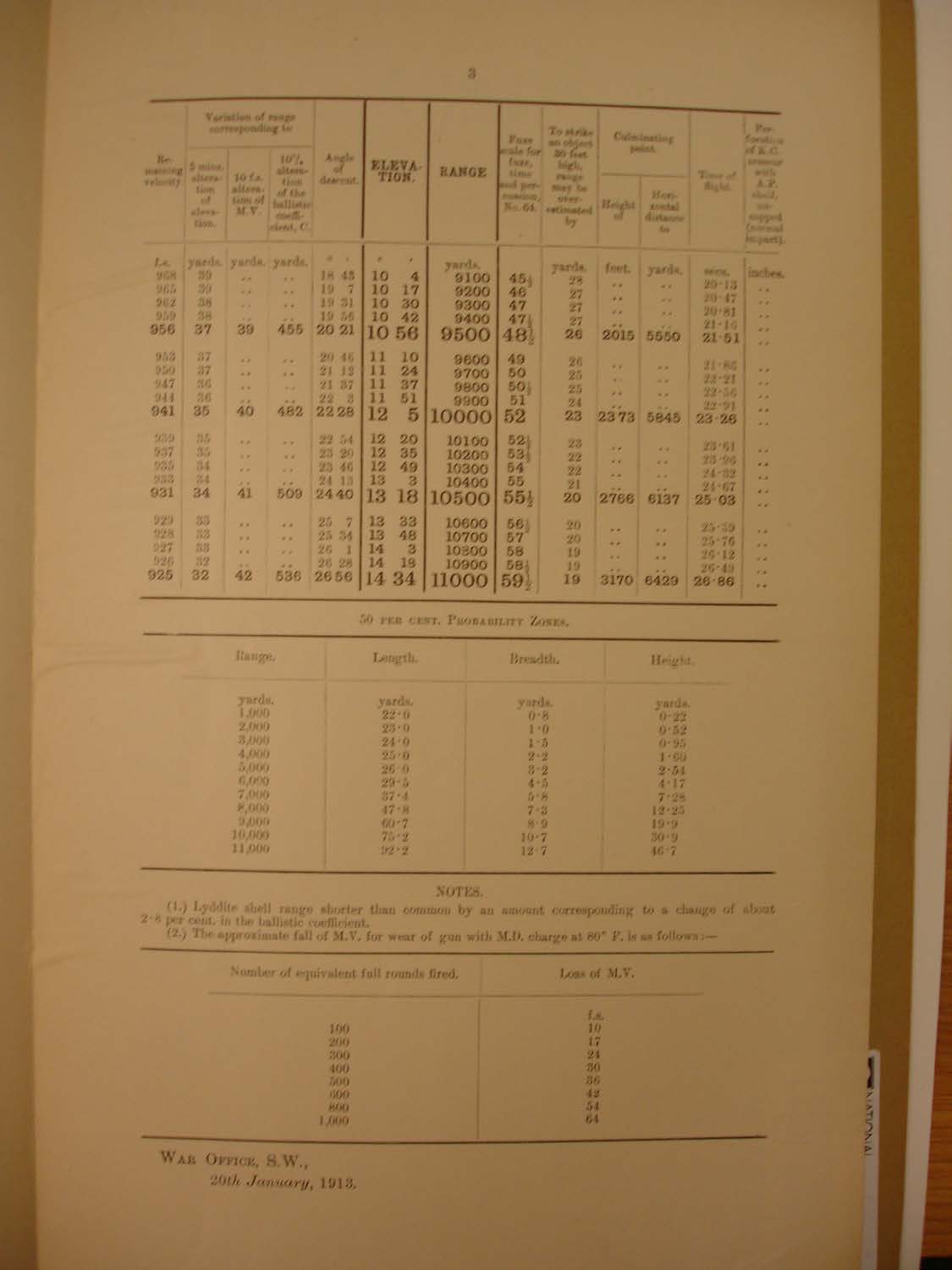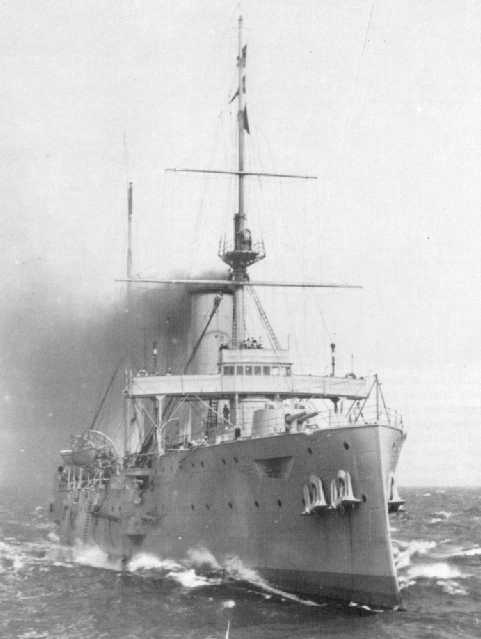
A Vickers design that was widely used on pre-World War I ships as well as being one of the Army's best artillery weapons once some early teething problems were worked out.
During World War I, these guns were used to arm the Iron Duke and Tiger classes along with a variety of Monitors. Used in small gunboats and AMCs during World War II. The Army used them mainly for coastal defense batteries for both wars. Some were used as heavy field artillery during World War I and a few were used as railway guns during World War II.
The only difference between the Mark VII and Mark VIII was that the breech on the Mark VII opened to the right while breech on the Mark VIII opened to the left in order to suit the left hand gun mounting in the twin mounts used on the Monmouth class cruisers.
The Mark VII and VIII were constructed of inner A tube, A tube, partially wire wound, B tube and overlapping jacket. Older guns used a four-motion long-screw breech while later ones used a Welin breech block and hand-worked skew gear mechanism. A total of 898 (one source says 901 guns) Mark VII and 27 Mark VIII guns were built and three Mark VIII guns were converted to the Mark VII style after the Monmouth class cruisers were scrapped. 629 of these guns remained in Navy service as of 1939. Twelve Army guns lacking a B tube were designated as Mark VIIv, while the Mark VII* and VIIv* were guns relined with a high strength alloy steel A tube which allowed heavier charges in the later 45 degree coastal mountings. The total number of guns issued to the Army was about 350 and many more were transferred from the Navy.
The Mark VII remained in service until the abolition of coast artillery in 1956 (Britain) and 1959 (NZ).
The Mark XXIV was an Army coastal defense gun with the same performance as the Mark VII* but with a loose barrel construction. About 140 of these guns were manufactured during World War II.
| Designation | 6"/45 (15.2 cm) BL Mark VII 6"/45 (15.2 cm) BL Mark VIII |
|---|---|
| Ship Class Used On | Mark VII
Capital Ships: Formidable, London, Duncan, first five King Edward's, Tiger, Barfleur and Iron Duke classes Cruisers: Cressy, Drake, Monmouth, Hampshire and Challenger classes Monitors: Severn, Humber, Mersey, M.27, Clive, Craufurd, Eugene, Moore, Rupert and Wolfe Gunboats: Aphis class Other: AMCs, some DAMS and auxiliary warships Rearmed: Narcissus, Immortalité, Undaunted, Endymion, Theseus, Edgar, Grafton, Highflyer, Hyacinth, Vindictive, Astraea, Fox, Amethyst, Adventure, Attentive and all Dido class except Eclipse The large destroyer Swift replaced her two bow 4"/40 (10.2 cm) Mark VIII guns with one of these 6" (152. cm) guns Briefly used on the destroyer Viking Schoolboats: Bustard, Cuckoo and Drudge 1919 Caspian Force and Siberia River Flotilla During World War II: Iron Duke, Insect class gunboats, AMCs, armed liners and DEMS Mark VIII
|
| Date Of Design | 1899 |
| Date In Service | 1901 |
| Gun Weight | 16,572 lbs. (7,517 kg) with breech |
| Gun Length oa | 279.2 in (7.092 m) |
| Bore Length | 269.5 in (6.845 m) |
| Rifling Length | 233.6 in (5.933 m) |
| Grooves | 24 1 |
| Lands | N/A |
| Twist | N/A |
| Chamber Volume | 1,715 in3 (28.10 dm3) 2 |
| Rate Of Fire | 5 - 7 rounds per minute 3 4 |
- ^There were two different kinds of rifling in general use, designated as Mark I and Mark III. The Mark III rifling allowed a larger chamber but I have been unable to determine the other differences between these two Marks or what was Mark II rifling.
- ^The chamber volume for a few guns was altered to allow a larger charge - see notes in the "Ammunition" section.
- ^
The Rate of Fire figure given above is found in references for British guns of this caliber, but "Warrior to Dreadnought: Warship Development 1860-1905" quotes Jellicoe's 1906 figures for rates of fire for these guns in gunlayers' tests and in battle practice and notes that the latter figures corresponded well to those actually attained by the Japanese at Tsushima:
Gunlayers Test 12 rounds per minute Battle Practice 4 rounds per minute - ^In "Jutland: An Analysis of the Fighting" by John Campbell, it is stated that almost all British capital ships had few or slow hoists for their 6" (15.2 cm) guns and that once the ready ammunition was used up the rate of fire dropped to about 3 rounds per minute. This same work states that for light cruisers the rate of supply from magazines was was about three to five rounds per minute per gun and usually closer to the lower figure.
| Type | Bag |
|---|---|
| Projectile Types and Weights 1a | CPBC: 100 lbs. (45.4 kg)
CPC 4crh: 100 lbs. (45.4 kg) HE 4crh: 100 lbs. (45.4 kg) HE 6crh: 112 lbs. (50.8 kg) 2a |
| Bursting Charge | HE (1901): 8.7 lbs. (3.9 kg)
CPC: 7.5 lbs. (3.4 kg) HE 4crh: 13.3 lbs. (6.0 kg) |
| Projectile Length | CPC: 23.5 in (59.7 cm)
HE (1901): 22.9 in (58.2 cm) Others: N/A |
| Propellant Charge 1a | Pre-World War I: 20 lbs. (9.1 kg) Mark I
World War I: 28.6 lbs. (13 kg) MD26 Light charge: 23.1 lbs. (10.5 kg) SC103 3a4a Heavy charge: 28.2 lbs. (12.78 kg) SC140 3a4a 5a Special charge: 28.3 lbs. (12.81 kg) SC150 6a 2a |
| Muzzle Velocity 7a1a | Pre-World War I: 2,536 fps (773 mps)
Light charge: 2,573 fps (784 mps) Heavy charge: 2,775 fps (846 mps) Special charge: 2,640 fps (805 mps) |
| Working Pressure | N/A |
| Approximate Barrel Life | N/A |
| Ammunition stowage per gun | King Edward: 200 rounds
Iron Duke: 130 rounds Tiger: 120 rounds Others: N/A |
- ^1.11.21.3Coastal Artillery units armed with the Mark VII* and Mark VIIv* guns used a larger charge of 29.9 lbs. (13.6 kg) SC140 giving them a muzzle velocity of 2,890 fps (881 mps) and a range at 45 degrees of 25,100 yards (22,950 m) with 6crh 100 lbs. (45.4 kg) shells, but this combination was never used on a ship.
- ^During World War II, the gunboats Aphis, Cockchafer and Scarab used the Heavy charge.
- ^Special charges were used only for 112 lbs. (50.8 kg) projectiles.
- ^This gun was capable of a higher muzzle velocity, but for standardization purposes with other Marks of 6 in (15.2 cm) guns, the above values were used. This allowed all guns to use the same range tables. The Mark III rifling with the larger chamber allowed use of a slightly larger charge of 28.63 lbs. (13.0 kg) and this gave a new-gun muzzle velocity of 2,772 fps (845 mps).
| Elevation | Distance |
|---|---|
| 20 degrees 1b | MD26 and Light charge: 14,600 yards (13,350 m)
Heavy charge: 15,800 yards (14,450 m) |
| Elevation | Distance |
|---|---|
| 20 degrees | Special charge: 17,870 yards (16,340 m) |
- ^During the Falklands Battle of 1914, these 6" (15.2 cm) guns on HMS Kent were reported to have been badly outranged by the much smaller German 10.5 cm (4.1") guns on the cruiser Nürnberg. However, the heavier British shells with their lyddite bursters were significantly more effective than the lighter German ones.
| Range | KC Side Armor |
|---|---|
| 3,000 yards (2,740 m) | 2.0 in (5.1 cm) |
Data from "The Grand Fleet: Warship Design and Development 1906-1922" for an angle of obliquity of 30 degrees and a striking velocity of 1,321 fps (403 mps). Projectiles were salt-filled (blind).
| Designation | Single Mount
King Edward (10), Challenger (11), Cressy (12), Drake (16), Monmouth (10) and Devonshire (6): PIII and PIV Insect (2): PIII Tiger (12) and Iron Duke (12): PVIII AMCs, other auxiliary warships and DEMS: PIII, PIV or PVII Twin Mount 1c |
|---|---|
| Weight | N/A |
| Elevation | PIII and PIV: -7 / +15 2c PVIII: -7 / +14 degrees |
| Elevation Rate | Manual operation, only |
| Train | Single Mount
about -80 / +80 degrees in casemate mountings about -150 / +150 degrees in open mountings Twin Mount
|
| Train Rate | Manual operation, only |
| Gun recoil | N/A |
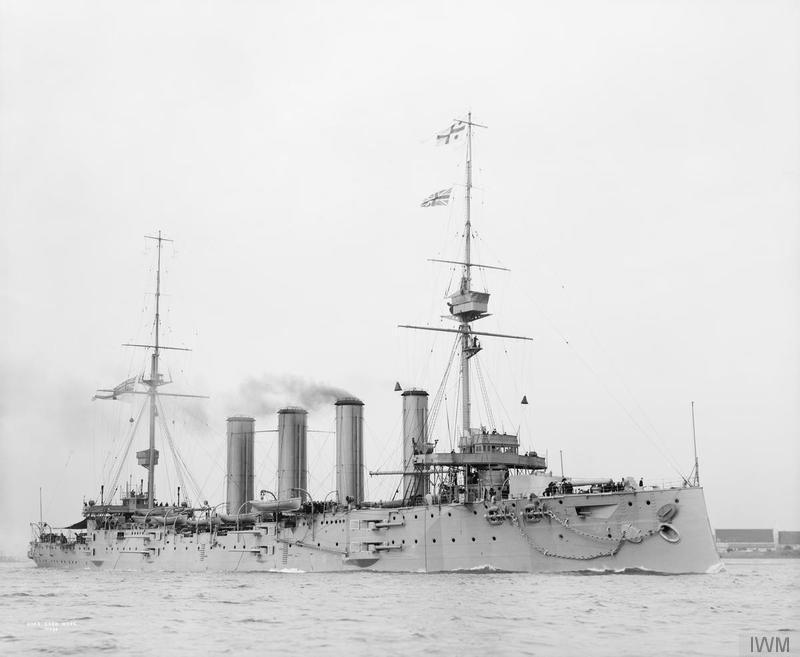
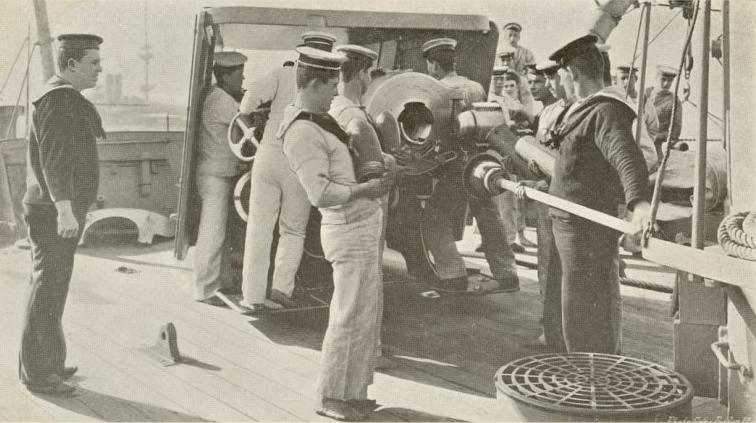
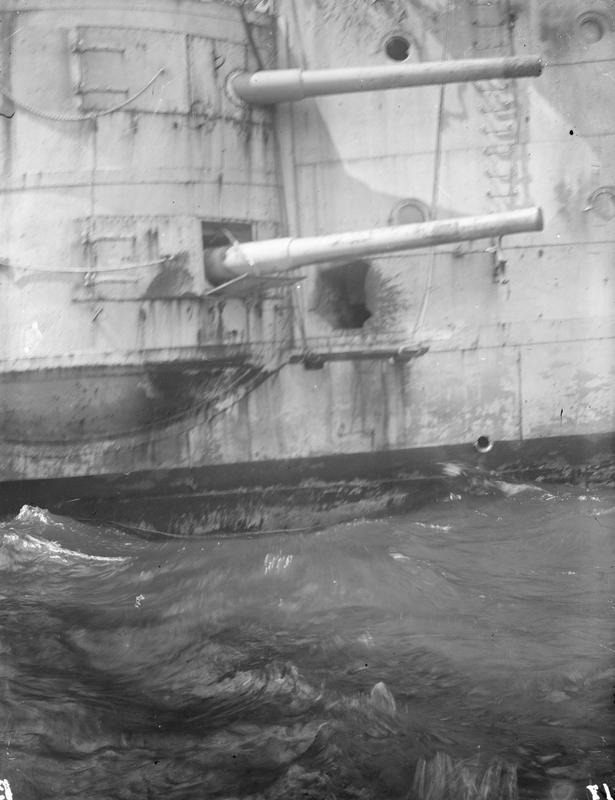
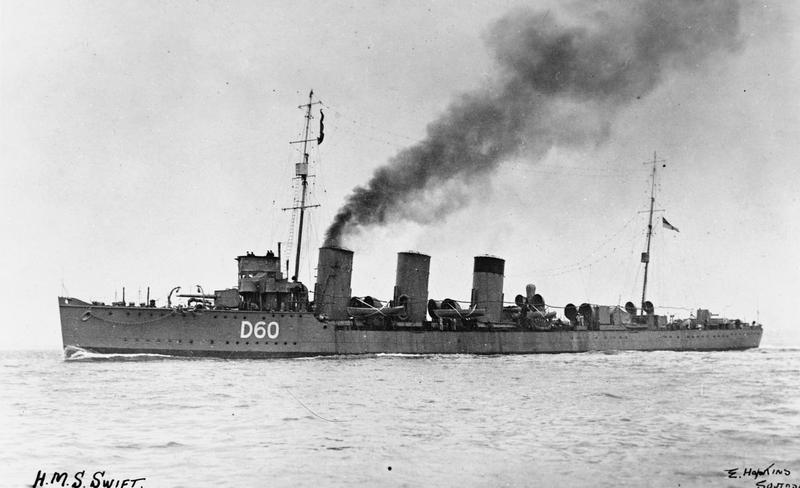
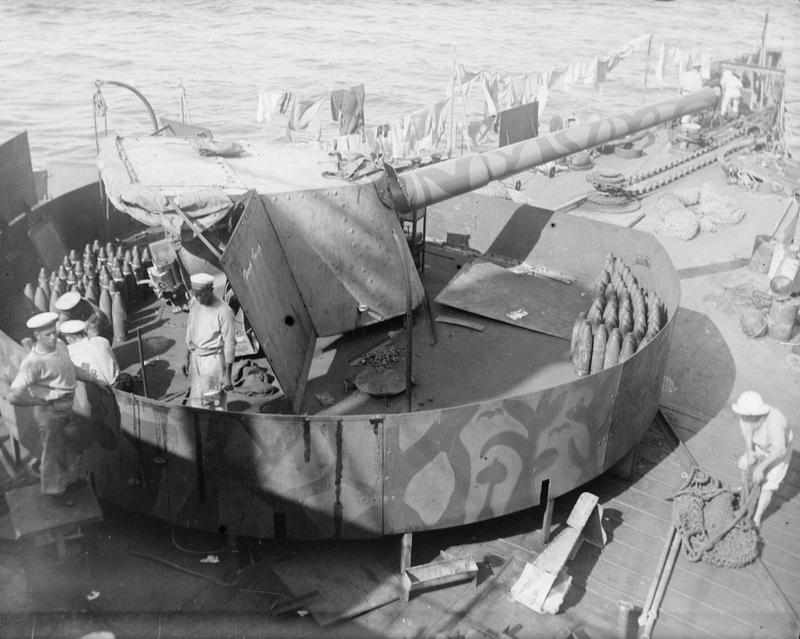
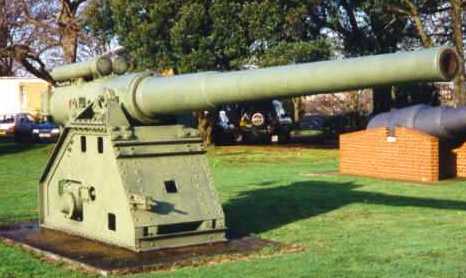
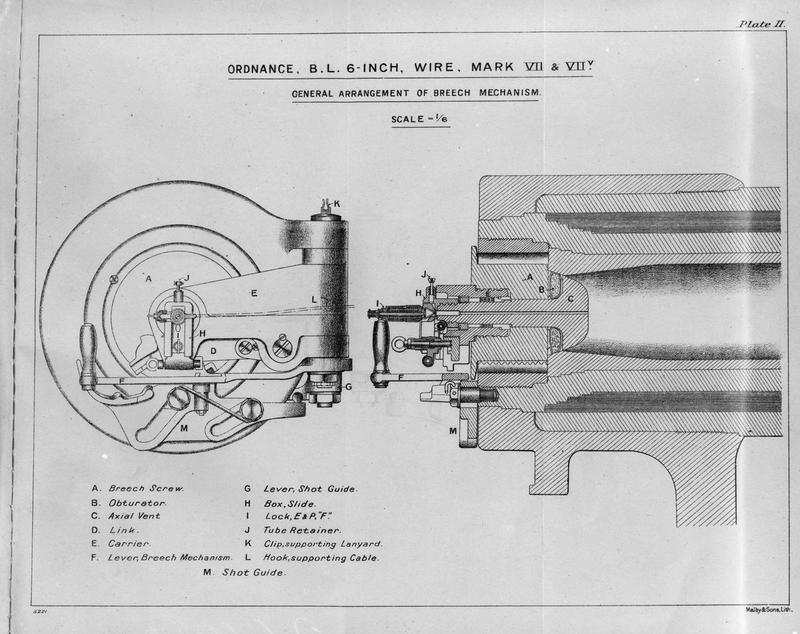
The Vickers Photographic Archive
See photograph 4902
"Warrior to Dreadnought: Warship Development 1860-1905" and "The Grand Fleet: Warship Design and Development 1906-1922" both by D.K. Brown
"British Battleships of World War One" and "The Majestic Pre-Dreadnought" articles in "Warship Volume VII" all by R.A. Burt
"Big Gun Monitors: The History of the Design, Construction and Operation of the Royal Navy's Monitors" by Ian Buxton
"Naval Weapons of World War Two" and "British Naval Guns 1880-1945 No 11" article in "Warship Volume VII" both by John Campbell
"Cruisers of the Royal and Commonwealth Navies" by Douglas Morris
"British Battleships: 1860 - 1950" by Oscar Parkes
"A Concentrated Effort: Royal Navy Gunnery Exercises at the End of the Great War" article by William Schleihauf in "Warship International" No. 2, 1998
"Graf Spee's Raiders: Challenge to the Royal Navy, 1914-1915" by Keith Yates
---
Special help from Daniel Muir and Pete Cannon
27 June 2008 - Benchmark
30 January 2009 - Deleted comment regarding 45 caliber vs. 50 caliber, added additional ship information in the "Ship Class Used On" section and in the Mount / Turret "Designation" section
02 February 2014 - Added ammunition stowage for Iron Duke and Tiger
20 February 2014 - Added photograph of HMS Swift
24 May 2014 - Added photograph of HMS Kent
23 November 2014 - Added 1913 Range Table for coastal guns
30 November 2015 - Changed Vickers Photographic Archive links to point at Wayback Archive
10 May 2021 - Updated to HTML 5 format

